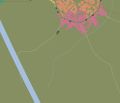Dragon Eye Atlas:Progress
From Dragon Eye Atlas
Summary
- 571 articles in this Wiki
- Recent Changes
| Month | Article Count |
|---|---|
| 2019/09 | 63 |
| 2019/10 | 96 |
| 2019/11 | 571 |
| 2019/12 | |
| 2020/01 | |
| 2020/02 |
2019/11 - UI Improvements
- Realm, city/town and villages names on most maps are now clickable and will lead to their respective wiki pages, making the map interactive!
- Added interactive maps to the list of realms and cultures.
- Added list of provinces to realm pages (for those where provinces have been defined).
2019/10 - Details Added
- Beginning to add town detail maps. Phonas is the first fully developed town, with Sumegaidau being developed.
- Also added flags to all the realms (except the elven ones, because elves don't use flags).
- Added the first Points of Interest.
- Added country roads (around Mea, Sumegaidau County and others).
- Added the first Noble Houses and noteworthy people.
- Reworked the overlays and many behind-the-scenes details on the wiki.
- Changed wiki fonts and a few visuals.
2019/09 - Initial Content
Also bringing the first content into the wiki, including the races as well as the basic structure of realms, cultures, religions and other details.
2019/09 - Basic Technology
Figured out how to export map data from Azgaar's Fantasy Map Generator, wrote the code to do it and added it to the generator with a successful pull request.
Mostly figured out how to do the same with Watabou's Medieval Fantasy City Generator, but this time using his SVG export directly without changes to the upstream code.
Imported everything into QGIS and started working on it. It's still a far cry from the sheer beauty of Azgaar's Generator, but I'm getting there. Here are some screenshots from my current status:
-
first QGIS experiments
-
city in QGIS
-
map overview
Thanks to Mapbox, I've managed to integrate my map into the wiki and styled it more or less beautifully (I'm not an artist). For the integration, the Mediawiki extension Widgets proved the most useful, much more so than the various dedicated maps extensions, which make it so much more difficult to use your own map source.
Time Parameter
Little known is that GIS also supports temporal extents, so data can be located in time as well as space - something that can be so interesting for historic maps and "scrolling through time".


